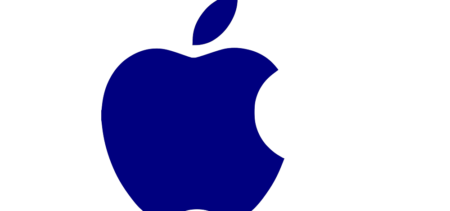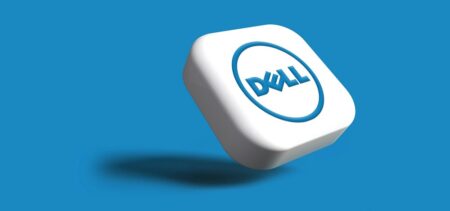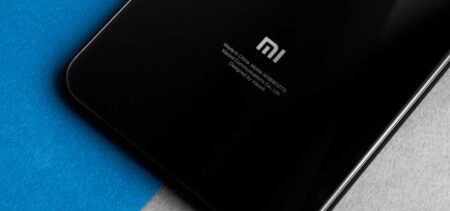As we mentioned in the first part of this article, we will try to estimate the adoption rates for a few innovative technologies, based on the latest trends. Last week we featured technologies that shared a common feature – the “smart” characterization.
This week’s contestant technologies belong to the logistic part of operations. Rather than being the stars, these technologies are more of an indispensable, crucial part of the digital mega–revolution yet to come.
WIRELESS CHARGERS
• Current status
The already existing wireless chargers use a localized electromagnetic field to charge the battery placed nearby. AC current passing through a coil of wire enables the wireless charger to generate the electromagnetic field. So the battery device is not plugged into anything, but has to be situated somewhere between 5mm and 40mm from the charger, in order for the system to work.
There are two main leading standards currently – the Qi (backed by around 200 tech companies forming the Wireless Power Consortium), and the PMA or Power Matters Alliance (backed by retailers because it works with a unique ID for each device charged). Samsung and Nokia support both standards in Galaxy S6, S6 Edge, respectively in Lumia 920, while Apple hasn’t yet made its move on wireless charging, although the Apple Watch inductive charging system employs the Qi standard, implicitly.
The third, newer standard is Alliance for Wireless Power, or A4WP, whose main supporters are Qualcomm and Samsung Electronics. It will presumably enter the market in 2016.
Many other smartphones are wireless charging compatible (Google, Sony, Motorola, LG, HTC), without coming with a wireless charging pad when sold.
On the other hand, there are those who integrate or produce such chargers without having to do with anything with the production of the chargeable devices, like Ikea, which offers wireless charging furniture or appliances.
• Near Future
The near future expectancies are most probably in the line of building up partnerships between phone producers and wireless chargers producers. The charging distance could also increase considerably, with added anti-interference features.
• What’s holding it back?
The lack of unified standards would be the main identified issue. Conflicting standards confuse the user and disperse what might be a unitary, attractive concept.
In addition, the current not-so-spectacular mechanism of placing the phone on a pad instead of plugging it in might explain the lack of major buzz around this technology. The proximity restraint reduces the spectacularity and takes a bit of this new technology’s edge.
• Public reaction & Pushing degree
The public reaction – imprecisely defined yet.
The publicity – still at the beginning.
5G INTERNET
• Current status
The requirements for 5G networks are as follows: data rates of tens of Mb/s capability for tens of thousands of clients; one Gbit/s capability for an entire office of workers (dozens of users); considerably enhanced spectral efficiency; improved coverage and signaling efficiency; reduced latency in comparison with Long-Term Evolution wireless (4G LTE). Until 5G launches, these standards are included into the ITU-T 4G standards.
These requirements belong to the Next Generation Mobile Networks Alliance, which also approximates 2020 as the year of 5G roll-out.
5G is seen in combination with IoT. Furthermore, for a fully developed IoT we need 5G technologies to be a reality.
On August 7, at the National Instruments’ NI Week, from Austin, Texas, Samsung and Nokia presented working infrastructure prototypes for 5G networks. Considered the backbone of Big Data and IoT, the Samsung demo stations showcased a partially developed concept.
Nokia, on the other hand, demonstrated the 5G necessary higher frequency by sending two MIMO streams across the stage.
The results were significant for both demonstrations.
• Near Future
With 50 billion connected devices forecast for 2020, 5G is competing with Wi-Fi and LTE id offering the right connectivity support. Costs will also matter, as well as availability and efficiency. The winner will showcase universal connectivity.
This matter will resolve in the years to come – depending on the development of each contestant technology.
• What’s holding it back?
The time frame might be too optimistically estimated, at least according to some of the voices in the field. A more reasonable time-frame would be 2022, or even 2025.
Carriers also have to prepare to support the new network capacities, and their investments require motivation. The prospect of lots of new customers serves as motivation, but it is conditioned by the IoT development. IoT needs connectivity logistics to support all the new communicating devices.
It seems like the conditional determination translated into a loop. It remains to be seen who from a much-needed push ahead will come.
• Public reaction & Pushing degree
Since we are talking about “backstage” Internet/computing, the public perceives it as a less spectacular matter. The specialists are 5G enthusiasts, at least those who support this type of connectivity.
Since we’ve seen that prototype showcasing is still at the beginning, the publicity can’t be taken into consideration yet. Most of the 5G discussions are based upon the few material advancements.
3D PRINTING
• Current status
3D printing has made a name for itself and evolved in the relatively short time since it reached the public. Adding the use of metal alloys and ceramic to the previously used polymers (plastic), the procedure also known as Additive Manufacturing (AM) currently involves six types of additive processes.
We have presented 3D printed and its recent breakthroughs in another article, available here.
That article being pretty exhaustive in what concerns the current status of this particular technology, we will not detail any further on this subject.
• Near Future
Reducing the costs, as it is the case with other technologies we’ve presented, could greatly improve the mass adoption of 3D printing. So far, only the stronger market entities can afford employing AM in manufacturing vehicle parts, construction models, medical implants and devices.
The recent printing of circuits and wireless sensors by using this technique is a proof-of-concept for things to come. Although a bit far from being available for the buyers to take at home and use in everyday activities, 3D printing is heading that way. The idea of a future where people would download blueprints of products to use in home 3D printing is already in the minds and on the lips of those who think ahead of their time.
Thingiverse, for example, is a website offering digital designs for physical objects to be downloaded and built at home, with several means, including the 3D printer.
Customizer is an app that lets people make customized 3D Things that you can share, download and print.
This app is made by Makerbot, who also produced Makerbot Printshop. The same company commercializes mini compact 3D printers, software, tools and materials to enable such an experience.
Food 3D printing is another trend that has reached the public, although it is more of an entertaining activity than a serious application of this technology, so far.
And if you are curious to find out what objects could not exist before 3D printing, you can find out here.
• What’s holding it back?
As it was the case with other technological developments, rules and regulations have not yet adapted to the new opportunities 3D printing technologies offer. No sooner than approximately a week after the announcement of 3D printed drugs, and we are talking about intellectual property challenges brought on by this new manufacturing possibility.
Funding would be another issue, and you can check out the current ETFs and Mutual Funds with 3D Printing Exposure – with detailed specifications.
The 3D product offering seems to meet insufficient demand, a phenomenon explainable by the fact that those who invested in the traditional manufacturing chains of production are resilient in changing their entire approach. The gap still seems wide and maybe the business decision factors are yet reluctant.
• Public reaction & Pushing degree
On its side, the public received well this new technology and seems to channel it mostly into art and entertainment. The ability of producing its own physical 3D objects is very appealing and it calls to the creative side of every human being. As long as the price is right and the printer really works, there are many who would put such an item on their wish list, or even buy it straight away, without giving it another thought.
The two main tendencies in today’s 3D printing (applied to the business area) are design prototyping in manufacturing, and product customization.
The third party beneficiaries would again be shoppers everywhere, who relinquish having customized products (for product customization).
As for design prototyping and manufacturing, various industries can benefit from it. Purchasers of finite products, again, would indirectly benefit from it too.
The publicity is rather well represented, although it could do better globally.
WINNER TECHNOLOGIES:
Our last “contestant” would be the designated winner. The technology of 3D printing is about to reach a landmark by paving the way to IoT (Internet of Things/Internet of Everything). Being able to print functional circuits and exploring various binding combinations for such circuits could be the answer to some of the IoT challenges.















































